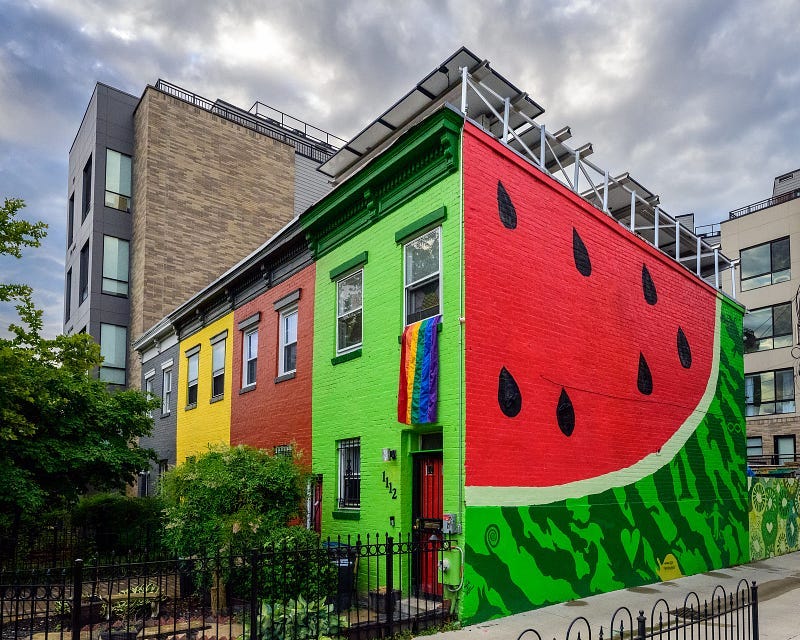Of Course, AI Cannot Replace Creativity
Earlier this week I saw a LinkedIn news alert declaring research shows AI cannot replace creativity. I could not help but think of course…

Earlier this week I saw a LinkedIn news alert declaring research shows AI cannot replace creativity. I could not help but think of course it cannot, creativity often defies logic. Creativity is counter-intuitive and in its most notable cases random and unique. However, I don’t think creatives should feel comfortable as AI is just beginning its substantial and steady impact on the business.
To be clear, AI’s inability to fully replace creativity lies in its algorithmic nature. Creativity — at least in its initial forms — is rarely logical. In many ways, creativity is evolutionary. At its best, creativity can be quite random, and delightful, surprising people. Though there are aspects that are rote and predictable, they call the best creativity inspired for a reason.
The obvious reason why an algorithm cannot simulate creativity is this randomness. In fact, promises to do so can be bunched into the many failings of over-hyped general AI, which has struggled to deliver the sentient experience promised by so many futurists and thought leaders.
Most successful forms of AI work on specific problems and leverage data-driven probability. Some algorithms can predict what will be popular or consumed, en masse or by a niche depending on how refined its data set may be. Probability can be used to suggest creative evolutions, and can further be trained by humans or another algorithm to better its output. But ultimately, human intervention drives that creativity. To assume a machine can create without human direction fails to recognize the unexpected decisions produced by emotional intelligence.
AI futurists Kai-Fu Lee and Chen Qiufan wrote in their 2041 book, “AI cannot create, conceptualize, or plan strategically. While AI is great at optimizing for a narrow objective, it is unable to choose its own goals or to think creatively. Nor can AI think across domains or apply common sense.”
However, simplified declarations that AI will not replace writers, graphic designers, video editors, and other creative workers provide a false sense of reassurance to worried workers. The reality is that AI is having a steady and growing influence on the business.
How AI Is Impacting Creativity

While AI is not replacing creative thinking anytime soon, it is augmenting creative works. In cases where simple rote tasks are in play, AI is going further and simply executing them.
AI replicates formulaic writing, automating creative tasks like normalizing video, suggesting color corrections for imagery, etc. These tasks are the simple rote efforts that AI algorithms and machine learning is addressing in almost every industry. It saves hours for creatives that can focus on another task. In other cases, it can replace a writer on the quarterly report beat. It can simulate random outputs, and augment existing creativity
AI can make other impacts, guiding what makes successful a creative output. This ability to predict success is already used in the advertising space and I expect it will impact other content forms that involve less financial investment. In fact, you can see some forms already with WordPress plugins like Yoast SEO predicters.
In the worst cases, AI can popularize some content forms and minimize others as we have seen over and over again with intentionally tuned recommendation engines on social networks. Ask the droves of distraught photographers who have seen fine works minimized in favor of Reels on Instagram, or the marketers who used branded graphic elements on LinkedIn and now must deploy more amateurish content forms instead to garner impressions.
Of course, the content conditioning that AI perhaps provides — what ads work best, which content will get engagement — creates environments where lesser creatives become formulaic. And great creatives innovate, generating new and inspired works that leverage or conquer the algorithm and make huge impacts.
The Balancing Act of the AI-Inspired Creative

In my opinion, the way forward for creatives is to embrace AI at every turn and use it to their advantage. In reality, its ability to compute data, execute tasks and provide performance intelligence, both predictive and post is invaluable.
Creatives who use AI to enhance their efforts — co-create with AI if you would — will have a competitive advantage. They will be faster, more efficient, and produce better results on a more regular basis.
Those AI-enhanced creators will better enjoy their work, literally engaging in the tasks that fuel their spirit while avoiding rote and repetitive tasks. Their efforts will make them more valuable and competitive, providing access to the best opportunities.
However, they will have to know when AI predictions are best tabled, and be willing to take smart risks on new concepts. AI-inspired creatives need to stay in the driver’s seat to avoid becoming formulaic and effectively resting on their laurels. Other creatives will have new ideas and perhaps better AI, creating a constantly evolving competitive situation.
Creatives who don’t embrace AI-enhanced production will likely have fewer options available to them. Eventually, they may find their work relegated to an outdated and less useful status. There is little value in that.
In conclusion, creatives’ fears of replacement by AI may not be true in a literal sense. But those who adopt the new tools first will remain competitive while their peers fall behind.
My company Evalueserve uses AI to produce data analytics. The opinions expressed here are my own and do not reflect the company’s. I used AI to proof this article and help produce the images used, of course :)
Subscribe to DDIntel Here.
Join our network here: https://datadriveninvestor.com/collaborate


